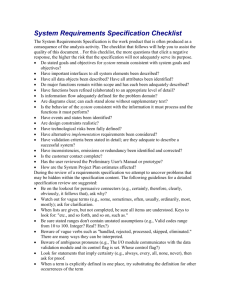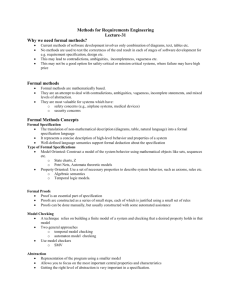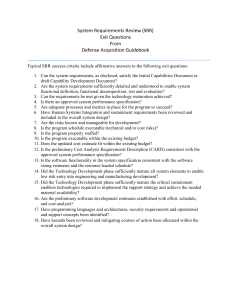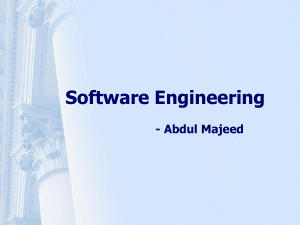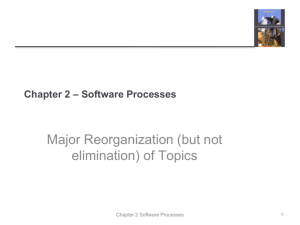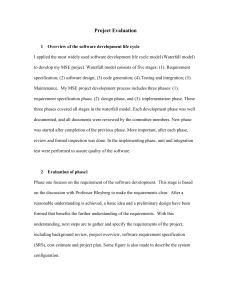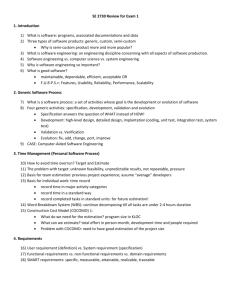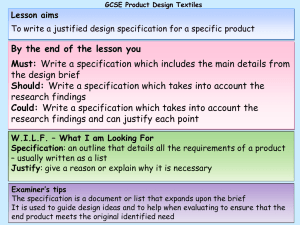Software Process Activities
advertisement
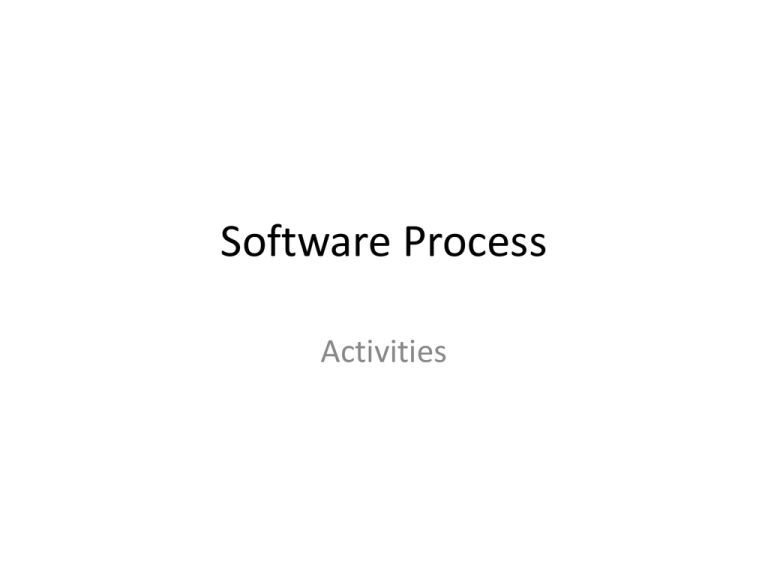
Software Process Activities Process activities • Real software processes are inter-leaved sequences of technical, collaborative and managerial activities with the overall goal of specifying, designing, implementing and testing a software system. • The four basic process activities of specification, development, validation and evolution are organized differently in different development processes. In the waterfall model, they are organized in sequence, whereas in incremental development they are inter-leaved. Chapter 2 Software Processes 2 Software specification • The process of establishing what services are required and the constraints on the system’s operation and development. • Requirements engineering process – Feasibility study • Is it technically and financially feasible to build the system? – Requirements elicitation and analysis • What do the system stakeholders require or expect from the system? – Requirements specification • Defining the requirements in detail – Requirements validation • Checking the validity of the requirements Chapter 2 Software Processes 3 The requirements engineering process Chapter 2 Software Processes 4 Software design and implementation • The process of converting the system specification into an executable system. • Software design – Design a software structure that realises the specification; • Implementation – Translate this structure into an executable program; • The activities of design and implementation are closely related and may be inter-leaved. Chapter 2 Software Processes 5 A general model of the design process Chapter 2 Software Processes 6 Design activities • Architectural design, where you identify the overall structure of the system, the principal components (sometimes called sub-systems or modules), their relationships and how they are distributed. • Interface design, where you define the interfaces between system components. • Component design, where you take each system component and design how it will operate. • Database design, where you design the system data structures and how these are to be represented in a database. Chapter 2 Software Processes 7 Software validation • Verification and validation (V & V) is intended to show that a system conforms to its specification and meets the requirements of the system customer. • Involves checking and review processes and system testing. • System testing involves executing the system with test cases that are derived from the specification of the real data to be processed by the system. • Testing is the most commonly used V & V activity. Chapter 2 Software Processes 8 Stages of testing Chapter 2 Software Processes 9 Testing stages • Development or component testing – Individual components are tested independently; – Components may be functions or objects or coherent groupings of these entities. • System testing – Testing of the system as a whole. Testing of emergent properties is particularly important. • Acceptance testing – Testing with customer data to check that the system meets the customer’s needs. Chapter 2 Software Processes 10 Testing phases in a plan-driven software process Chapter 2 Software Processes 11 Software evolution • Software is inherently flexible and can change. • As requirements change through changing business circumstances, the software that supports the business must also evolve and change. • Although there has been a demarcation between development and evolution (maintenance) this is increasingly irrelevant as fewer and fewer systems are completely new. Chapter 2 Software Processes 12 System evolution Chapter 2 Software Processes 13 Key points • Software processes are the activities involved in producing a software system. Software process models are abstract representations of these processes. • General process models describe the organization of software processes. Examples of these general models include the ‘waterfall’ model, incremental development, and reuseoriented development. Chapter 2 Software Processes 14 Key points • Requirements engineering is the process of developing a software specification. • Design and implementation processes are concerned with transforming a requirements specification into an executable software system. • Software validation is the process of checking that the system conforms to its specification and that it meets the real needs of the users of the system. • Software evolution takes place when you change existing software systems to meet new requirements. The software must evolve to remain useful. Chapter 2 Software Processes 15
